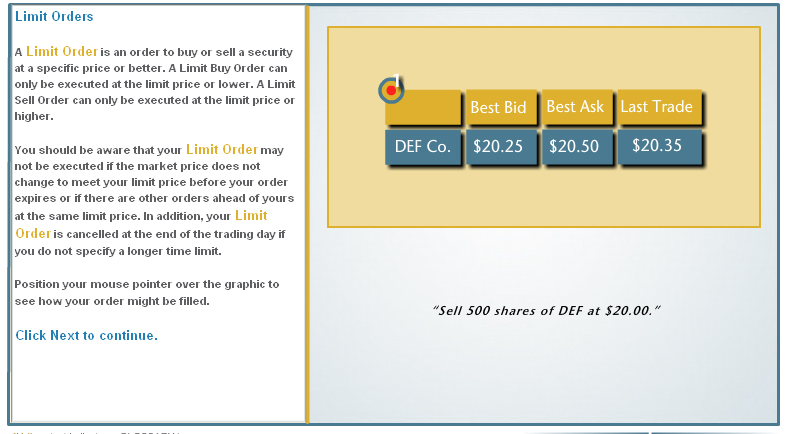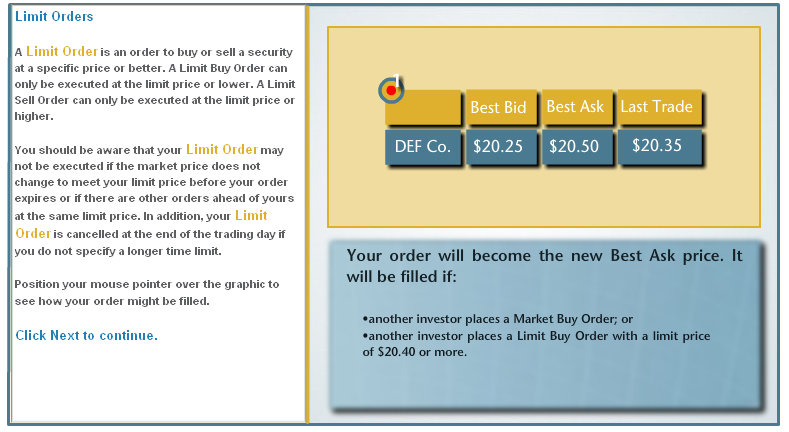Roubini claims that a Greek default is better for all concerned:
“The recent debt exchange deal Europe offered Greece was a rip-off,” said Roubini in a commentary in Tuesday’s Financial Times. “If you take into account the large sweeteners the plan gave to creditors, the true debt relief is close to zero.”
The major problem, in Roubini’s view, is a lack of growth and competitiveness, which can only be overcome by currency depreciation.
“A return to a national currency and a sharp depreciation would quickly restore growth and competitiveness, as it did in Argentina and many other emerging markets that abandoned their currency pegs,” he said.
It’s official! National is buying HSBC’s brokerage:
National Bank of Canada (“National Bank” or the “Bank”), through an affiliate, has entered into an agreement with HSBC Bank Canada and certain of its subsidiaries (“HSBC Bank Canada”) pursuant to which National Bank will acquire the full service investment advisory business of HSBC Securities (Canada) Inc. (“HSBC Securities”) and certain assets related to the segregated fund and insurance business of HSBC Insurance Agency (Canada) Inc. (together, the “Full Service Investment Advisory Business”). HSBC Securities’ Full Service Investment Advisory Business has $14.2 billion of assets under administration, managed by over 120 investment advisors located in 27 offices across Canada. The Full Service Investment Advisory Business operates across Canada, with approximately 70% of its business being centered in Ontario and British Columbia.
National Bank has agreed to pay $206 million in cash to HSBC Bank Canada, subject to certain customary adjustments. An additional amount has been set aside to ensure maximum retention of investment advisors. The transaction is expected to increase National Bank’s 2012 and 2013 recurring EPS by $0.03 to $0.05. National Bank estimates the transaction will reduce its Common Equity Tier 1 ratio under Basel III rules by approximately 40 basis points. Closing is expected to occur in December 2011, subject to receipt of necessary regulatory approvals.
Here’s a straw in the wind:
Gold will exceed $2,000 this year, according to the average estimate of 16 respondents in a Bloomberg survey at the London Bullion Market Association’s conference in Montreal. The metal will peak at $2,268 next year, the survey showed.
Storage companies are responding. The 112-year-old Perth Mint, which refines more than 8 percent of all supply and is owned by the Western Australian state government, may add a new vault within the next year, according to Treasurer Nigel Moffatt. The mint sells everything from gold coins to 400-ounce (12.4- kilogram) bars.
Brink’s, the largest bullion carrier in the U.K., is considering adding more storage after opening a new London vault earlier this year. Barclays, based in London, is building a vault in the city that will open next year, the bank said in a statement last week.
Deutsche Bank, based in Frankfurt, is considering expanding existing facilities and developing new ones to meet demand, Matthew Keen, a director at the bank, said earlier this month. JPMorgan Chase & Co. (JPM) started a vault at the Singapore FreePort location last year and opened another in the financial district of New York.
Today’s winner of the coveted “Thug of the Day Prize” is Arthur Leader:
“We’ve had many angry patients say to us, ‘This is discriminatory’ and I say, ‘Yes, it is’ But I still won’t do it,” said Arthur Leader, co-founder of the Ottawa Fertility Centre. The facility where he works will not treat women with a Body Mass Index (a measurement of weight relative to height) of more than 35. A BMI of 30 meets the clinical definition of obese.
“A patient doesn’t have the right to make a choice that’s going to be harmful to them,” he said.
Yes they do, asshole. And we don’t need any pompous mechanics deciding which cars deserve to fixed, either.
For Dr. Leader, a major concern is that the “conscious sedation” used on patients while retrieving their eggs could disrupt breathing, but inserting a breathing tube into a patient who is morbidly obese is tricky and risky – “the patient could choke.”
“If that person then dies on my table – how good would I feel?” said Dr. Leader, who asks that women bring their BMI below 35 to receive treatment.
Who cares how you feel, twerp? If you feel you’re not competent to perform the procedure, then say so – spend a bit more time acting like a professional and a little less whimipering about your precious feelings.
Naturally, the possibility exists that Arthur Leader has simply applied the Canadian concept of competition to the problem of how to make a good living when there are other fertility clinics around: if you can’t beat ’em, get the regulators to outlaw the game.
Intact Financial, proud issuer of IFC.PR.A and IFC.PR.C, was confirmed at Pfd-2(low) by DBRS:
The Company’s operating subsidiaries continue to be among the stronger performers in the Canadian property and casualty (P&C) insurance industry in terms of underwriting profit and overall profitability. Overall industry profitability started to stabilize in 2010, in part as a result of the auto insurance reforms in Ontario and more benign weather patterns in 2010. For the first time in several years, Intact had an improved underwriting result, with a decline in its combined ratio.
…
Intact’s previous investment strategies had left it exposed to the unprecedented decline in global capital markets in 2008 and in early 2009. This led to increased impairment charges and higher realized losses as a result of the Company’s decision to actively reduce its exposure to common equity investments in financial services companies while increasing its holdings in Canadian government bonds. In 2010, the Company shifted some of its corporate exposure to bonds from preferred shares, reflecting changes to regulatory capital requirements and more efficient tax treatment. A more conservative portfolio is expected to put downward pressure on investment earnings over time but had a neutral impact year over year in 2010.The DBRS rating on the Company reflects its holding company status. While Intact has very strong operating entities, their regulated nature and the structural subordination of holding company obligations result in a rating assignment for the parent that is at least one notch below where the operating subsidiaries might be rated in their own right.
It was a good strong day for the Canadian preferred share market, with PerpetualDiscounts winning 18bp, FixedResets up 8bp and DeemedRetractibles gaining 11bp. It is of interest to note that the Bozo Spread (Current Yield PerpetualDiscounts less Current Yield FixedResets) is down to a mere 12bp. Volatility was muted, but on the positive side. Volume continued to be very low.
| HIMIPref™ Preferred Indices These values reflect the December 2008 revision of the HIMIPref™ Indices Values are provisional and are finalized monthly |
|||||||
| Index | Mean Current Yield (at bid) |
Median YTW |
Median Average Trading Value |
Median Mod Dur (YTW) |
Issues | Day’s Perf. | Index Value |
| Ratchet | 0.00 % | 0.00 % | 0 | 0.00 | 0 | 0.3365 % | 2,092.2 |
| FixedFloater | 0.00 % | 0.00 % | 0 | 0.00 | 0 | 0.3365 % | 3,146.6 |
| Floater | 3.11 % | 3.37 % | 57,505 | 18.83 | 3 | 0.3365 % | 2,259.0 |
| OpRet | 4.81 % | 2.28 % | 57,749 | 1.63 | 8 | 0.1738 % | 2,464.1 |
| SplitShare | 5.37 % | 0.59 % | 51,614 | 0.44 | 4 | 0.3646 % | 2,496.3 |
| Interest-Bearing | 0.00 % | 0.00 % | 0 | 0.00 | 0 | 0.1738 % | 2,253.2 |
| Perpetual-Premium | 5.61 % | 4.00 % | 116,807 | 1.07 | 16 | 0.0405 % | 2,118.9 |
| Perpetual-Discount | 5.27 % | 5.33 % | 113,782 | 14.86 | 14 | 0.1791 % | 2,259.2 |
| FixedReset | 5.15 % | 3.19 % | 208,975 | 2.61 | 59 | 0.0754 % | 2,330.7 |
| Deemed-Retractible | 5.03 % | 4.56 % | 234,855 | 4.52 | 46 | 0.1123 % | 2,203.8 |
| Performance Highlights | |||
| Issue | Index | Change | Notes |
| BNA.PR.C | SplitShare | 1.04 % | YTW SCENARIO Maturity Type : Hard Maturity Maturity Date : 2019-01-10 Maturity Price : 25.00 Evaluated at bid price : 21.32 Bid-YTW : 7.03 % |
| BAM.PR.J | OpRet | 1.13 % | YTW SCENARIO Maturity Type : Call Maturity Date : 2014-03-31 Maturity Price : 26.00 Evaluated at bid price : 26.90 Bid-YTW : 3.72 % |
| IAG.PR.A | Deemed-Retractible | 1.18 % | YTW SCENARIO Maturity Type : Hard Maturity Maturity Date : 2022-01-31 Maturity Price : 25.00 Evaluated at bid price : 23.20 Bid-YTW : 5.54 % |
| TCA.PR.Y | Perpetual-Premium | 1.26 % | YTW SCENARIO Maturity Type : Call Maturity Date : 2014-03-05 Maturity Price : 50.00 Evaluated at bid price : 52.26 Bid-YTW : 4.00 % |
| Volume Highlights | |||
| Issue | Index | Shares Traded |
Notes |
| TD.PR.M | OpRet | 95,505 | Called for redemption. YTW SCENARIO Maturity Type : Call Maturity Date : 2011-10-20 Maturity Price : 25.50 Evaluated at bid price : 25.72 Bid-YTW : 1.93 % |
| RY.PR.P | FixedReset | 84,700 | RBC bought 40,000 from Nesbitt at 26.90, then crossed 44,200 at the same price. YTW SCENARIO Maturity Type : Call Maturity Date : 2014-02-24 Maturity Price : 25.00 Evaluated at bid price : 26.90 Bid-YTW : 3.19 % |
| TD.PR.G | FixedReset | 66,700 | TD crossed 30,000 at 27.30; Nesbitt crossed 20,000 at the same price. YTW SCENARIO Maturity Type : Call Maturity Date : 2014-04-30 Maturity Price : 25.00 Evaluated at bid price : 27.30 Bid-YTW : 2.92 % |
| TD.PR.N | OpRet | 52,205 | Called for redemption. YTW SCENARIO Maturity Type : Call Maturity Date : 2011-10-20 Maturity Price : 25.50 Evaluated at bid price : 25.72 Bid-YTW : 1.66 % |
| IFC.PR.C | FixedReset | 37,350 | RBC bought 15,000 from Nesbitt at 25.05, then crossed 15,000 at the same price. YTW SCENARIO Maturity Type : Hard Maturity Maturity Date : 2022-01-31 Maturity Price : 25.00 Evaluated at bid price : 25.02 Bid-YTW : 4.16 % |
| BNS.PR.X | FixedReset | 28,200 | Desjardins crossed 26,200 at 27.30. YTW SCENARIO Maturity Type : Call Maturity Date : 2014-04-25 Maturity Price : 25.00 Evaluated at bid price : 27.30 Bid-YTW : 2.92 % |
| There were 20 other index-included issues trading in excess of 10,000 shares. | |||
| Wide Spread Highlights | ||
| Issue | Index | Quote Data and Yield Notes |
| TCA.PR.X | Perpetual-Premium | Quote: 51.40 – 52.18 Spot Rate : 0.7800 Average : 0.4661 YTW SCENARIO |
| PWF.PR.A | Floater | Quote: 19.61 – 21.50 Spot Rate : 1.8900 Average : 1.6093 YTW SCENARIO |
| PWF.PR.H | Perpetual-Premium | Quote: 25.25 – 25.64 Spot Rate : 0.3900 Average : 0.2596 YTW SCENARIO |
| FTS.PR.G | FixedReset | Quote: 25.85 – 26.15 Spot Rate : 0.3000 Average : 0.1929 YTW SCENARIO |
| IAG.PR.C | FixedReset | Quote: 26.53 – 26.91 Spot Rate : 0.3800 Average : 0.3018 YTW SCENARIO |
| TD.PR.C | FixedReset | Quote: 26.45 – 26.67 Spot Rate : 0.2200 Average : 0.1555 YTW SCENARIO |


